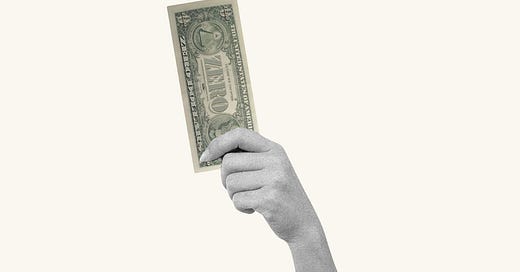« Let me teach you how to make éconocrocs* ».
That’s what Giulia told me just days after we toasted to our partnership. Éconocrocs is her word for penny-pinching tricks*. So, it only felt natural to kick off our (very long) series of TIPS FOR ZERO (Yes, there's still time to sign up here.) with a topic that’s all about smart spending: loyalty programs.
On paper, what could be better for a traveler looking to master the art of éconocrocs?
There are so many ways to hack these programs that some influencers have made it their niche. They show their followers how to score a “$39,000 Maldives vacation for only $3,750.” (Don’t look so puzzled, the video’s right here.)
In the travel industry, airlines were the first to reward customer loyalty, long before hotels followed suit. As early as 1970, for example, Air Inter offered subscribers a free flight after purchasing seven tickets. Makes you stop and think? Us too. Especially since not much seems to have changed since then. Travelers are still in the habit of chasing miles and points in exchange for rewards and upgrades that range from mildly interesting to downright forgettable.
But the world has moved on, and traditional loyalty programs are struggling to connect with a new generation of travelers. Gen Z’s consumption habits, driven by a thirst for uniqueness and novelty, feel worlds apart from these outdated models.
In recent years, some hotel groups have rethought their strategies to engage a new generation of travelers. Take Hyatt, for example. After hearing members of its program complain about the lack of options in emerging cities, the group acquired Mr & Mrs Smith, adding over 700 properties to its portfolio. The same goes for Design Hotels, the epitome of cool, now part of Marriott and its Bonvoy program. But that’s not exactly shaking things up.
The real revolution comes from Ennismore with a brilliant move called Dis-loyalty. Unlike most hotel loyalty programs, where membership is free, the group asks members to pay 15€ per month (or 180€ per year) to unlock a wide range of benefits. These include 50% off at new hotels within the first three months of opening, 20% off your first stay at any member hotel (The Hoxton, Mondrian, SLS, Delano, Mama Shelter, SO/, 25 Hours…), 10% off recurring stays, bars, and restaurants, and 365 free drinks per year…
Why does it work? Because unlike traditional programs that require spending a certain amount to unlock benefits, Dis-loyalty lets members access promotions immediately. There are no tiers or levels to climb by spending more. It’s an inclusive model that rewards members not for how often they stay, but for their curiosity in exploring new places.
“Be loyal to your mom, not your hotel” says the website. The model is flipped on its head: the thrill of discovery takes precedence over the deal, giving travelers back their role as explorers and, if the experience is a hit, ambassadors.
At Zero, we’re convinced that these programs have a crucial role to play in strengthening brand identity and standing out, as long as there’s strong creative direction and coherent strategic partnerships. If Dis-loyalty is a shining example, there are plenty of other possibilities, and we’d be happy to help you implement the idea that best fits your portfolio. To bring the new generation on board while still pampering your regulars. In the meantime, we’ll fuel our creativity with a free matcha at The Hoxton in Paris.
Éconocrocs, priceless.
This luxury hotel group wants to charge you $200 to join its loyalty program—it just might be worth it (Heidi Mitchell, Fast Company)
An interesting perspective with brands from other sectors, particularly in the restaurant industry, that have revolutionized existing program models.
Travel invented loyalty as we know it. Now it’s time for reinvention. (Jillian Tellez Holub, Mc Kinsey)
A detailed and data-driven analysis of consumer behaviors and the decline in loyalty towards traditional loyalty programs. Hence the need for brands to offer much more than points or miles to their customers.
Trading Stamps: A Long History (James J. Nagle, The New York Times)
An archive from the daily newspaper, published in December 1971, that traces the emergence of the first loyalty programs at the end of the 18th century.







Very interesting ! 😄